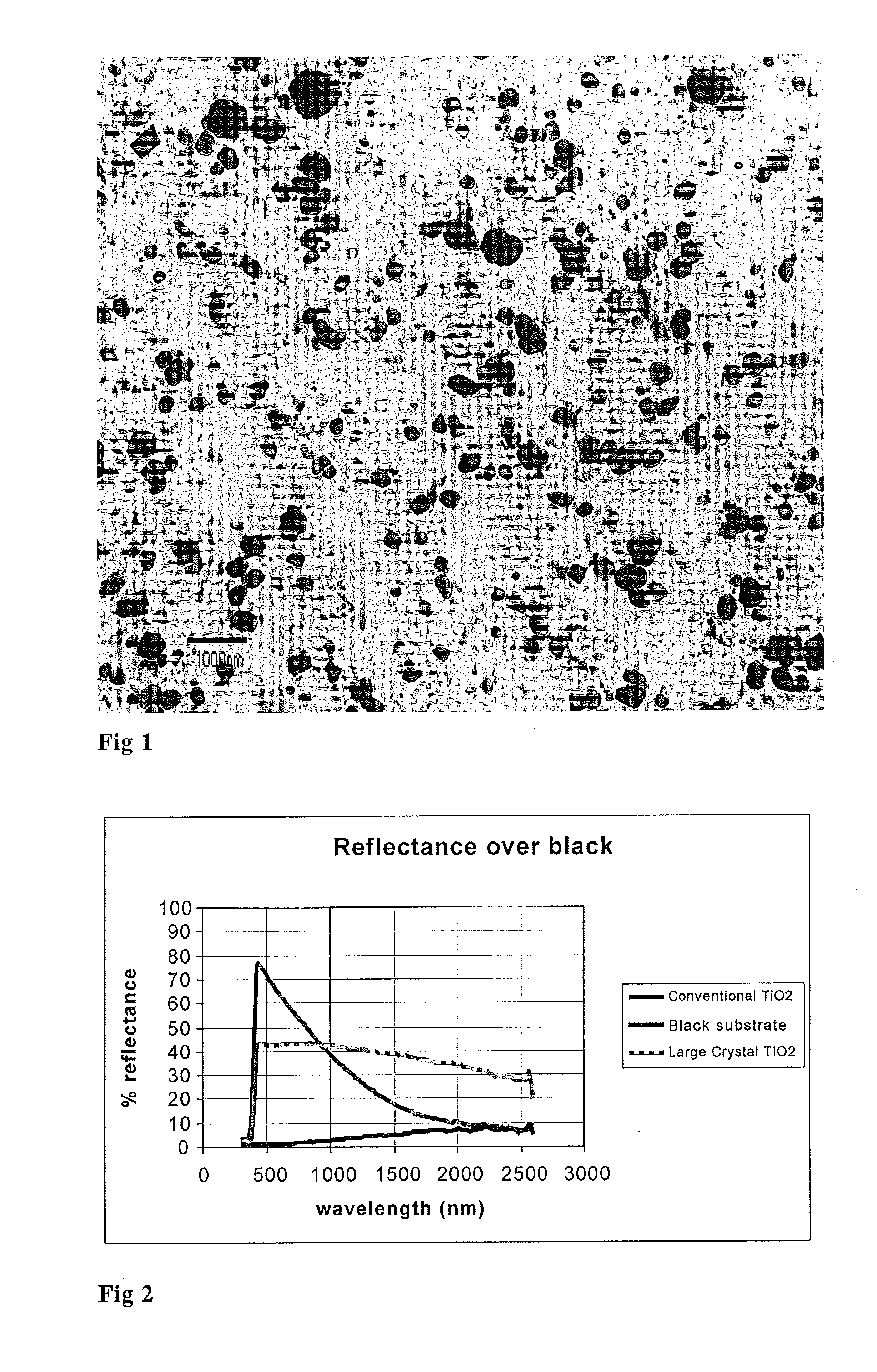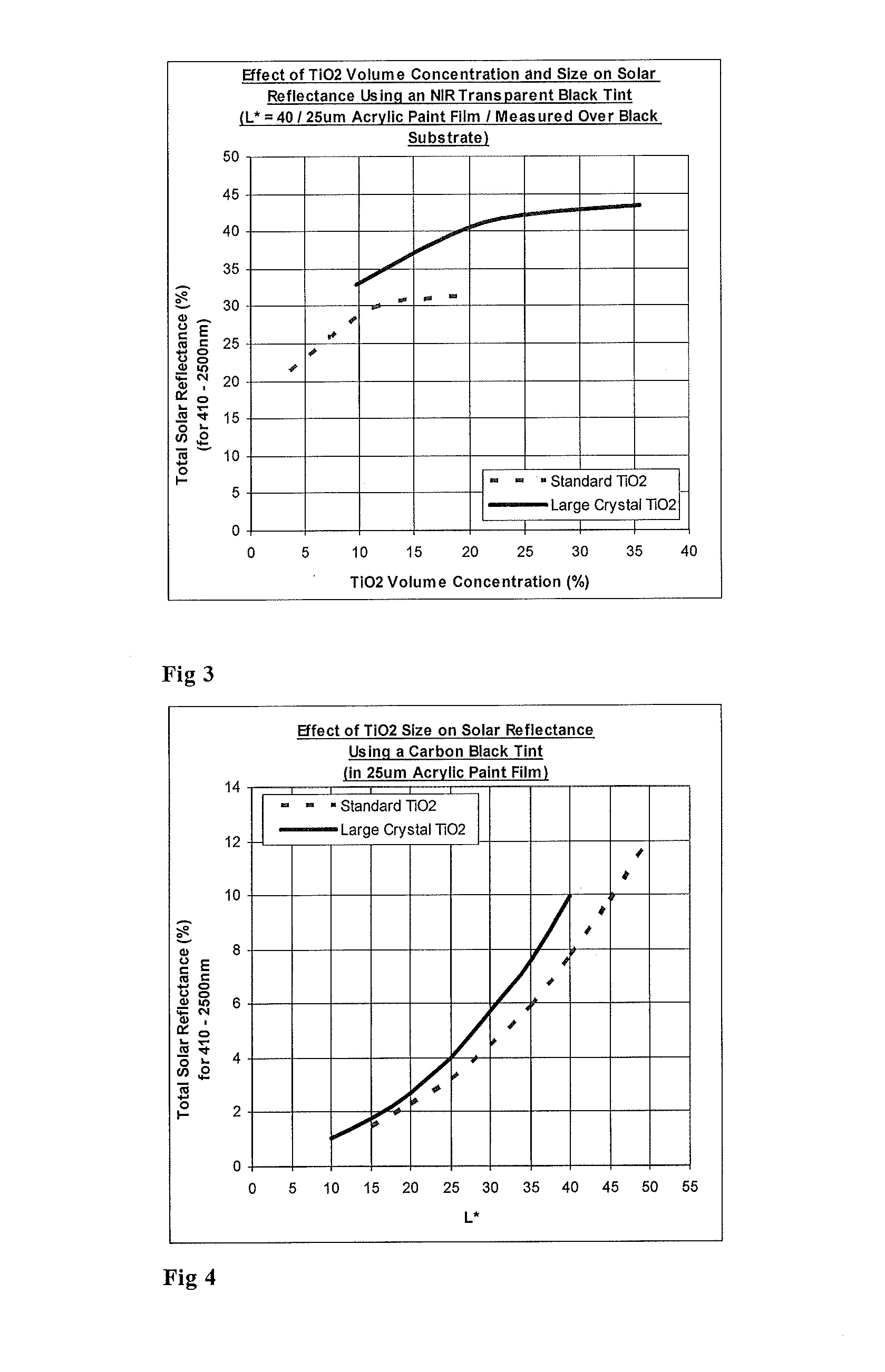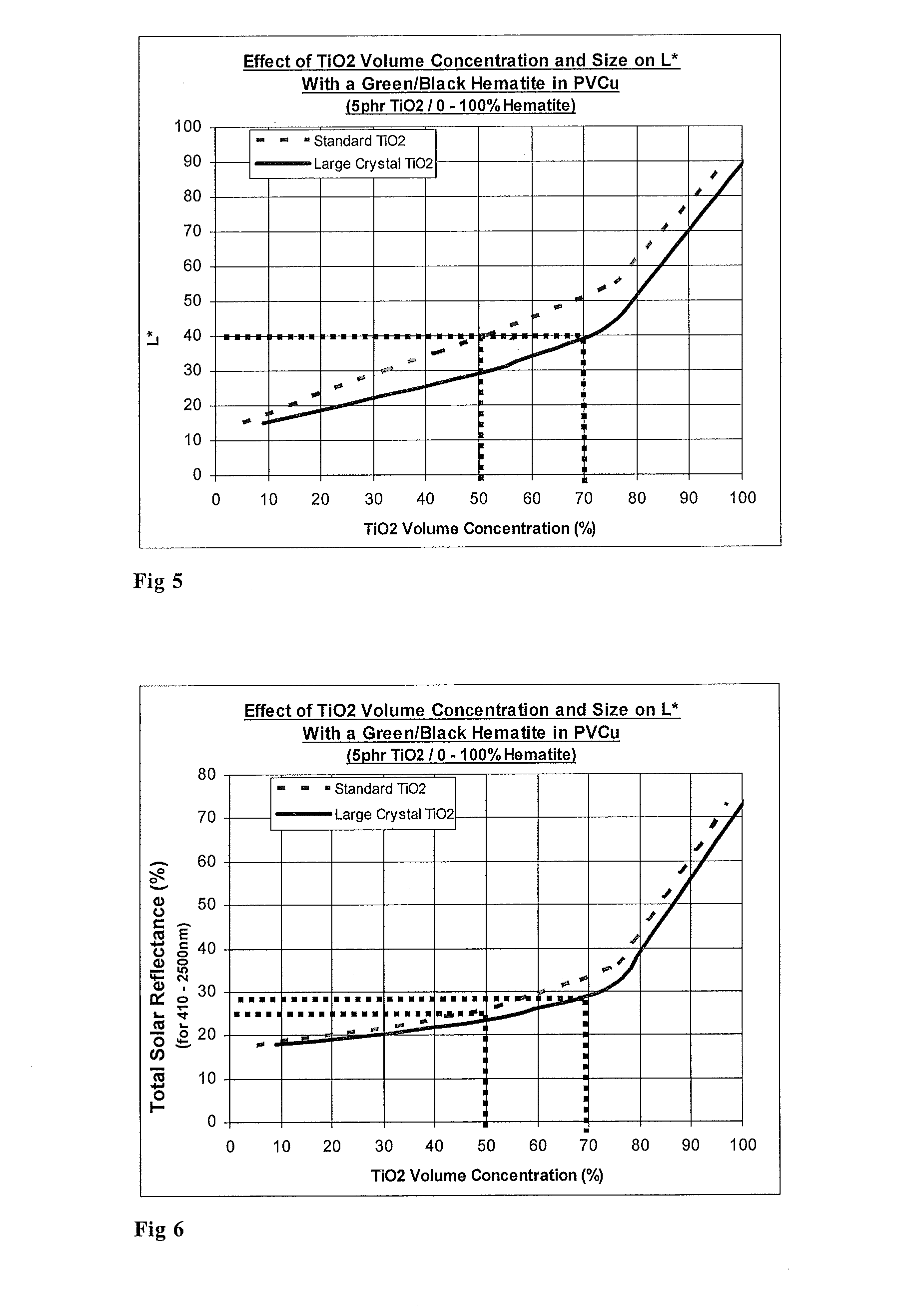Titanium dioxide
a technology of titanium dioxide and titanium dioxide, which is applied in the field of titanium dioxide, can solve the problems of limited approach, and inability to achieve dark or intense colours, and achieves superior weatherability, low scattering, and crystal size large
- Summary
- Abstract
- Description
- Claims
- Application Information
AI Technical Summary
Benefits of technology
Problems solved by technology
Method used
Image
Examples
example 1a
Production of Large Crystal TiO2
1.1 Method
[0274]A titaniferous feedstock was digested with concentrated sulphuric acid and the cake obtained dissolved to form a black sulphate liquor according to conventional TiO2 pigment methodology. This ‘black liquor’ was subsequently hydrolysed, according to the Blumenfeld Process, to precipitate hydrous titanium dioxide. To the pulp was added 0.3% Blumenfeld Nuclei (produced, according to the art, by digestion of a portion of the hydrous titanium dioxide described above in concentrated sodium hydroxide solution, and subsequent reaction of the sodium titanate produced with hydrochloric acid.) The pulp was further additioned with 0.05% w / w of Al2O3 and 0.2% w / w K2O.
[0275]The additioned pulp was then calcined by ramping the temperature to around 1000° C. at a rate of 1° C. / minute. The exact temperature is selected to ensure an anatase level of between 0.1 and 3%. Prior to calcination, manganese sulphate may optionally be used as a dopant at a con...
example 1b
Production of Large Crystal TiO2
1.1 Method
a) Production of Starting Material Using Mecklenburg Precipitation
[0278]A titaniferous feedstock was digested with concentrated sulphuric acid and the cake obtained dissolved in dilute acid to produce a solution of a titanium sulphate. This titanium sulphate was subsequently hydrolysed to precipitate hydrous titanium oxide by the deliberate addition of anatase nuclei (‘Mecklenburg’ process). This hydrous titanium oxide pulp was used as the starting material.
b) Formation of Large Crystal TiO2 from Starting Material
The pulp was washed and leached. 0.2% K2O and 0.2% Al2O3 was added (% wt / wt) to the TiO2. The pulp was then calcined in a rotary kiln. The temperature was increased at a rate of 1° C. / min to 1030° C. The sample was then held at 1030° C. for 30 minutes before being allowed to cool.
c) Characterisation
[0279]The resultant TiO2 was characterized for size by visual assessment of an electron micrograph and for % rutile by X-ray diffractio...
example 1c
Production of Large Crystal TiO2
1.1 Method
a) Production of Starting Material Using Mecklenburg Precipitation
[0281]A titaniferous feedstock was digested with concentrated sulphuric acid and the cake obtained dissolved in a more dilute sulphuric acid solution to produce a solution of a titanium sulphate. This titanium sulphate solution was subsequently heated to precipitate hydrous titanium oxide, the precipitation was nucleated by the addition of fine anatase crystals (‘Mecklenburg’ process). This hydrous titanium oxide pulp was used as the starting material.
b) Formation of Large Crystal TiO2 from Starting Material
The pulp was filtered and washed. Potassium and aluminium sulphate solutions were then added to the pulp to give 0.2% K2O and 0.2% Al2O3 (expressed as % wt / wt on TiO2). The pulp was then dried and calcined in a rotary kiln. During the calcinations the temperature was increased at a rate of 1° C. / min to 1030° C. The sample was then held at 1030° C. for 30 minutes before bei...
PUM
| Property | Measurement | Unit |
|---|---|---|
| particle size distribution | aaaaa | aaaaa |
| particle size distribution | aaaaa | aaaaa |
| particle size distribution | aaaaa | aaaaa |
Abstract
Description
Claims
Application Information
 Login to View More
Login to View More - R&D
- Intellectual Property
- Life Sciences
- Materials
- Tech Scout
- Unparalleled Data Quality
- Higher Quality Content
- 60% Fewer Hallucinations
Browse by: Latest US Patents, China's latest patents, Technical Efficacy Thesaurus, Application Domain, Technology Topic, Popular Technical Reports.
© 2025 PatSnap. All rights reserved.Legal|Privacy policy|Modern Slavery Act Transparency Statement|Sitemap|About US| Contact US: help@patsnap.com



